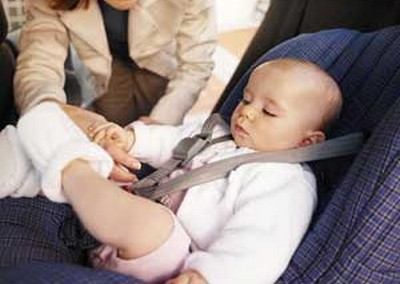Car travel
One mother with three extreme ADHD boys told me of her trips to and from school. ‘Car seating is run on a strict roster. On week one John sits in the front seat, Tom in the back right, and Jack in the back left. Week two, Jack moves to the front, John moves to back right, and Tom to back left. On leaving school the occupant of the front seat can talk for five minutes, then the back right, then the left.’ Finally, the mother said, ‘And we never allow the car to stop. Even if the fuel needle is on empty, we speed past service stations.’
It doesn’t need to be this bad but some children make cars a moving hell:
‘It’s not fair; she’s looking out my window.’ ‘Mum, he’s making that noise again.’ Are we there yet?’
Just because adults like long-distance driving, it doesn’t necessarily follow that this suits their children. If your child fights, squabbles and protests on the trip to the corner store, a 200-mile car trip could be a challenge. When long-distance travel ages parents and is a hazard to mental health, consider a quick air flight, a seat on a train or a holiday at home.

In case you have to take that trip, though, here are some ideas:
- Before you start, set down the ground rules about teasing, poking and annoying.
- Plan regular breaks and keep the passengers informed of the time to touchdown.
- If the car tape player is to be used for everybody, allocate tape time in advance.
- Borrow some talking books from your local library.
- A Walkman may help.
- Construct a token system where short periods of peaceful travel are rewarded with a small token (a tick, star, bead, etc). These all add up to a worthwhile reward (such as spending money) at the next fuel stop.
- Secure a large piece of luggage between the occupants of the back seat.
Clinginess
One- and two-year-old children are clingy by nature but this eases with age, and most will separate confidently by three or four.
However, there are a few who still cling right into the early school years. If friends visit or when addressed by a stranger they hide their face and hold onto Mum. Relatives become the expert psychiatrist:
‘That child has an emotional problem. It’s about time you toughened them up.’ But the child’s fears are real to them and forcing makes things worse.
A few children cling because they are stressed. This is common following a marriage split where the child knows they have lost fifty per cent of those they trust, and they are determined to stay close to the remaining half.
- If the environment is in equilibrium I encourage parents to steer gently and go with the flow. Little people vary in their ability to separate and they have another seventy-five years to sort things out.
- Let them know about visitors before they arrive. Role-play eye contact, greetings and small talk.
- Notice, praise and reinforce appropriate behavior.
- Encourage small group friendships, and then build to bigger numbers at more distant venues.
- Don’t push. They know how they feel and don’t need railroading by some insensitive adult.
- When reacting to family change, tread softly. They need all their supports at this time.